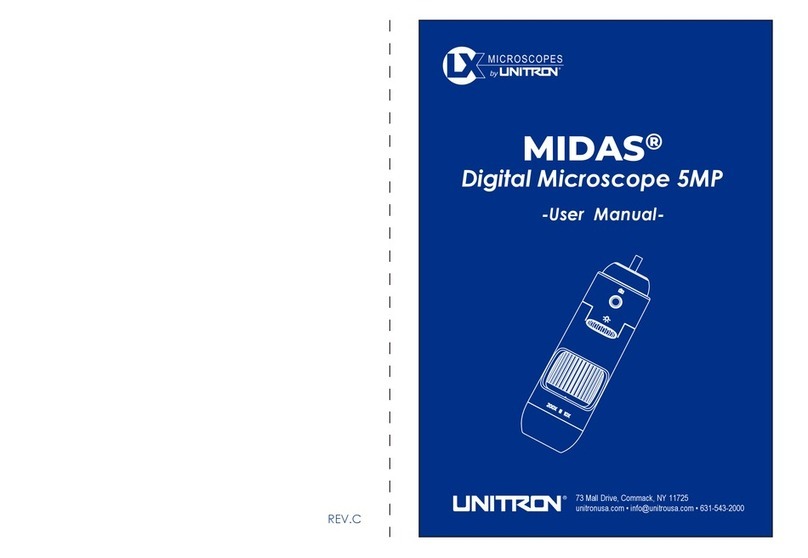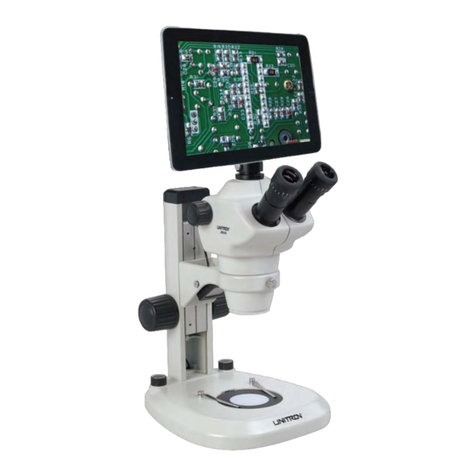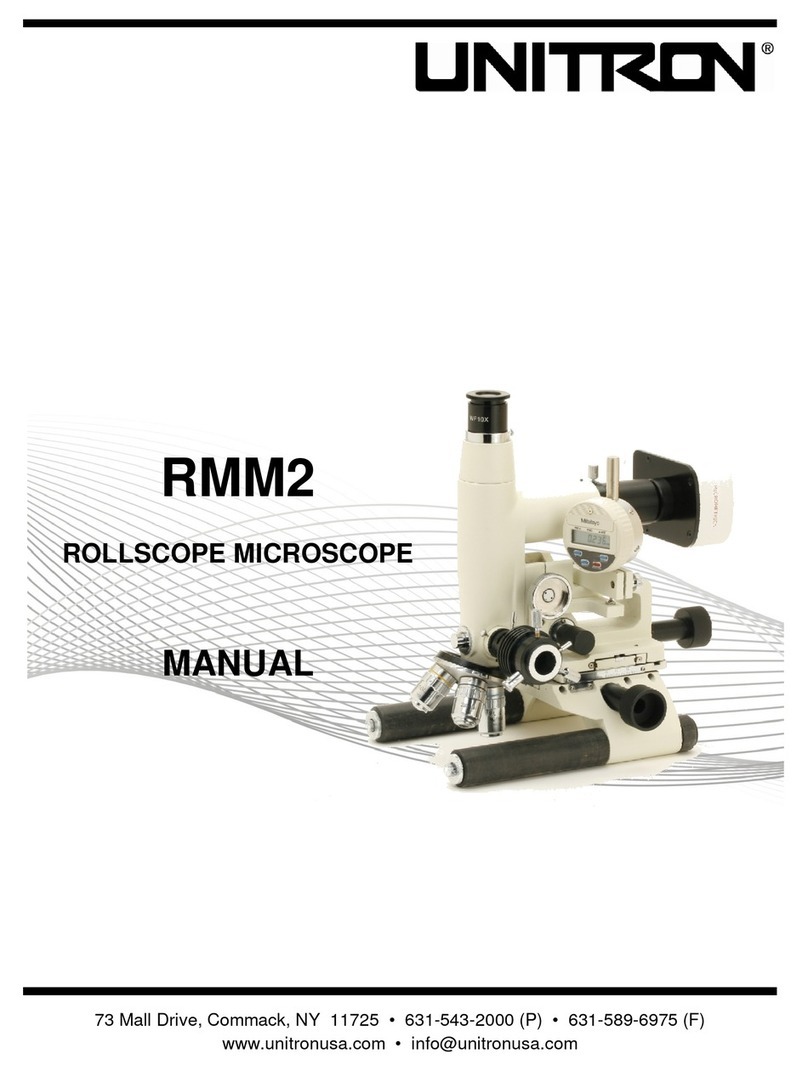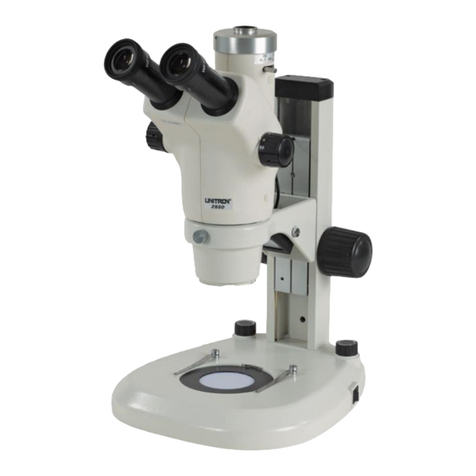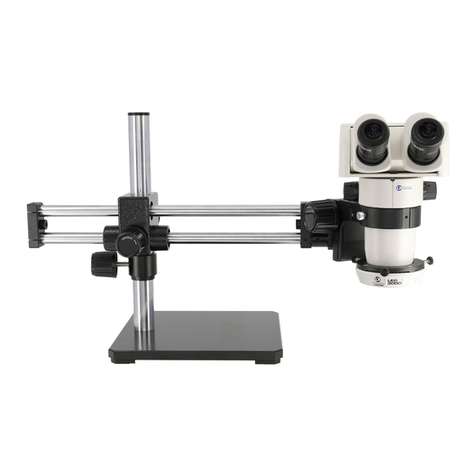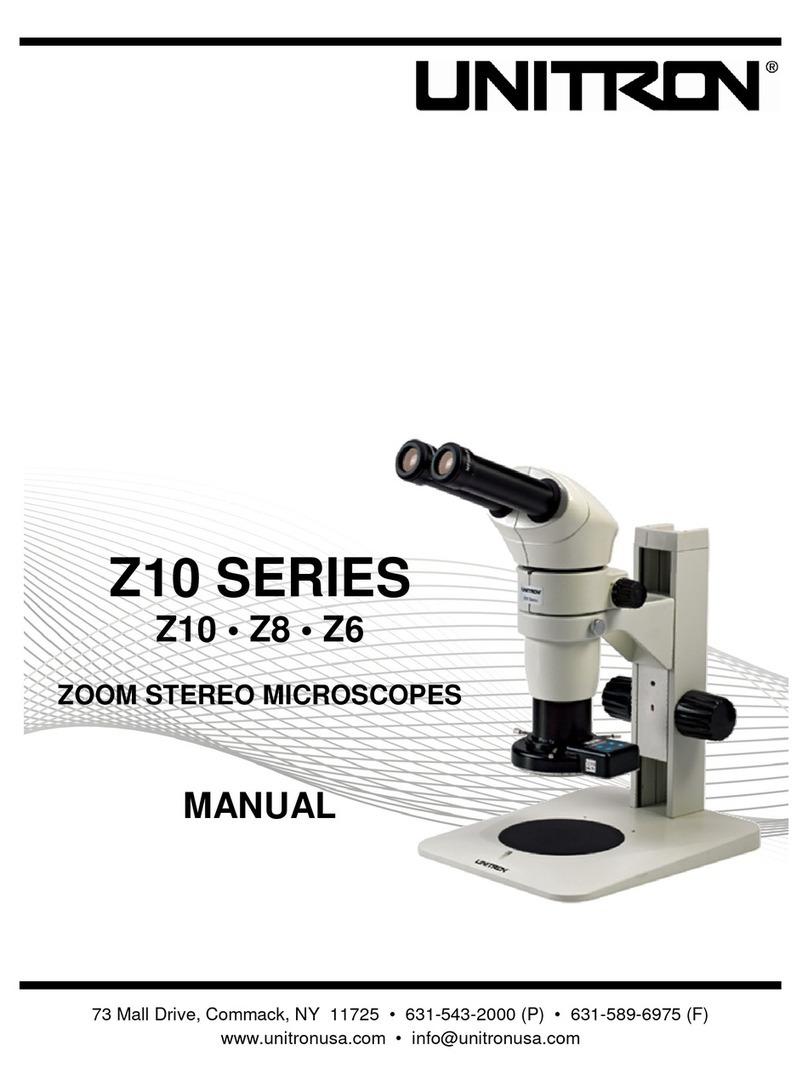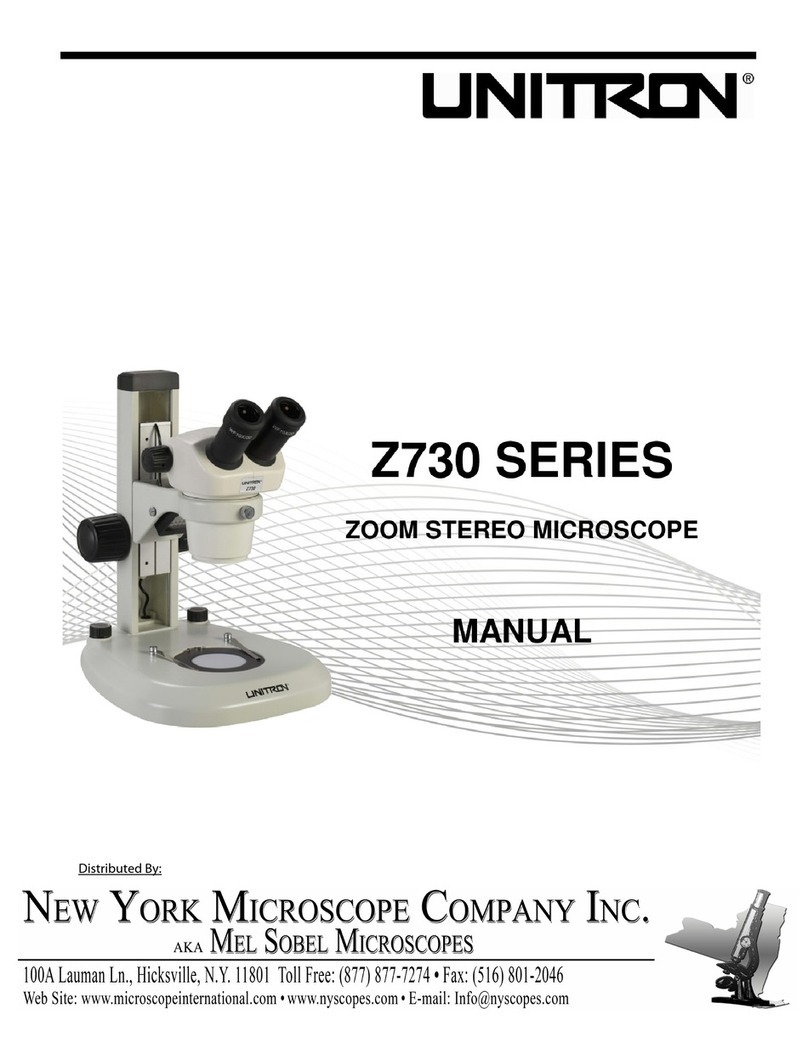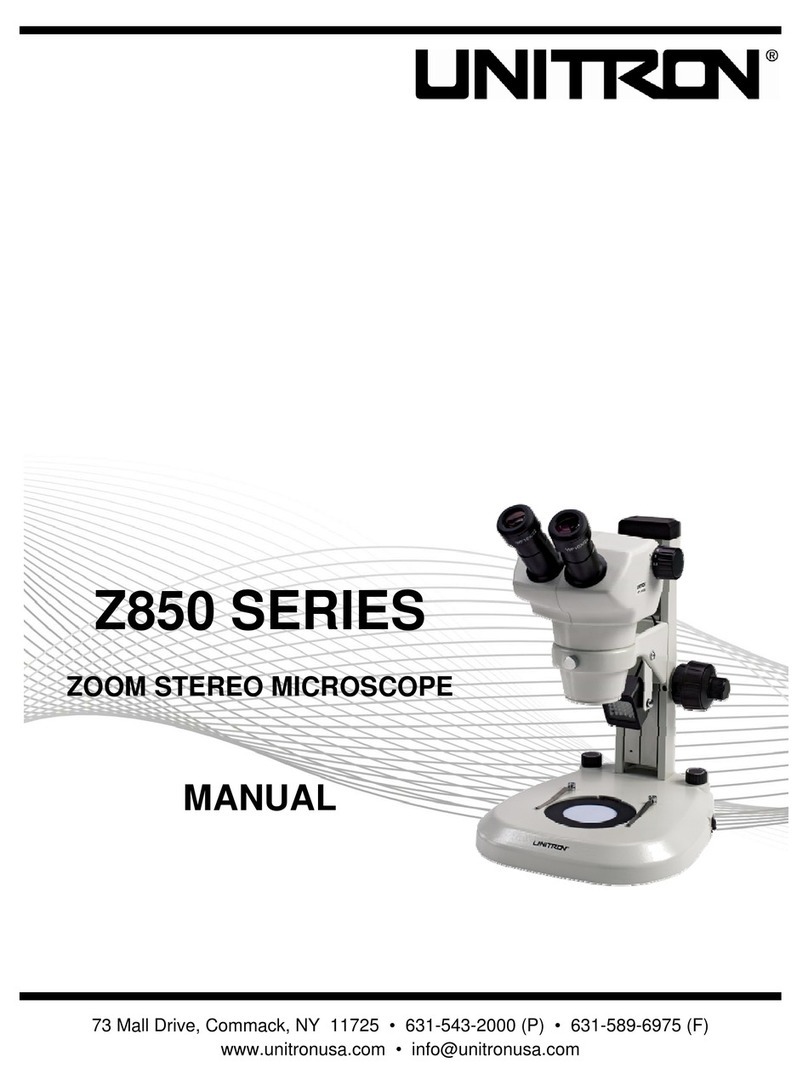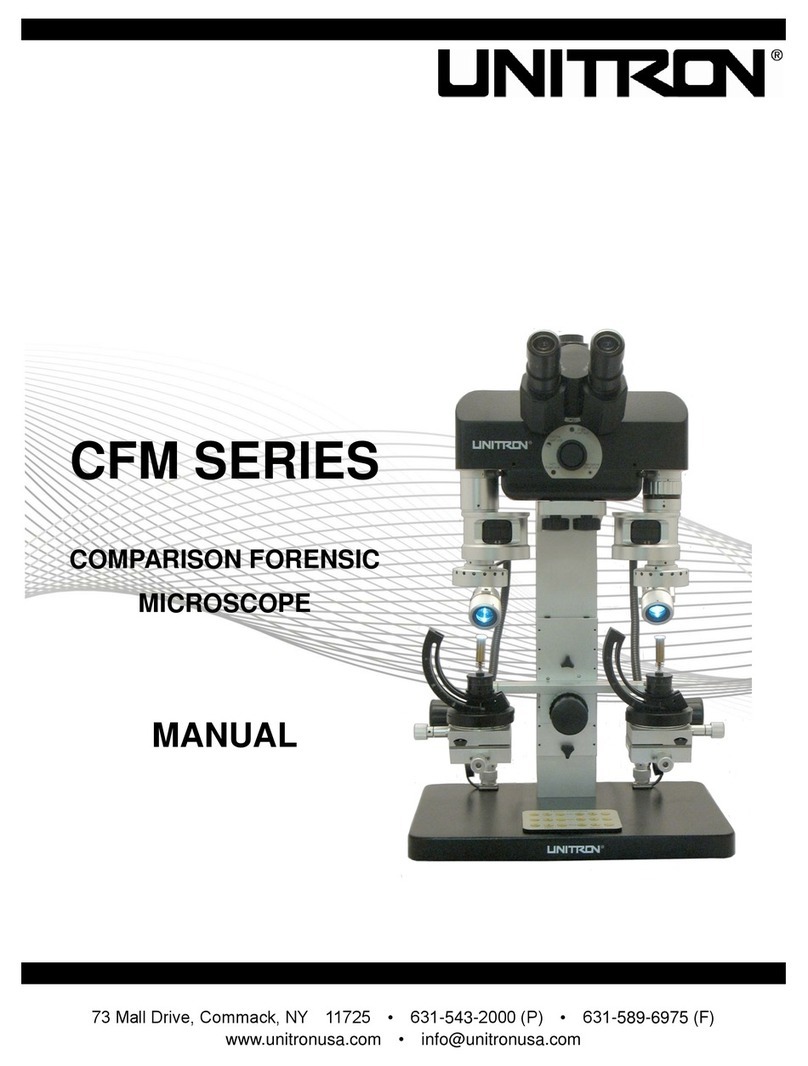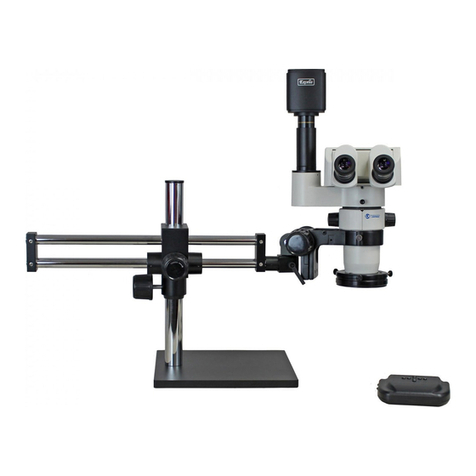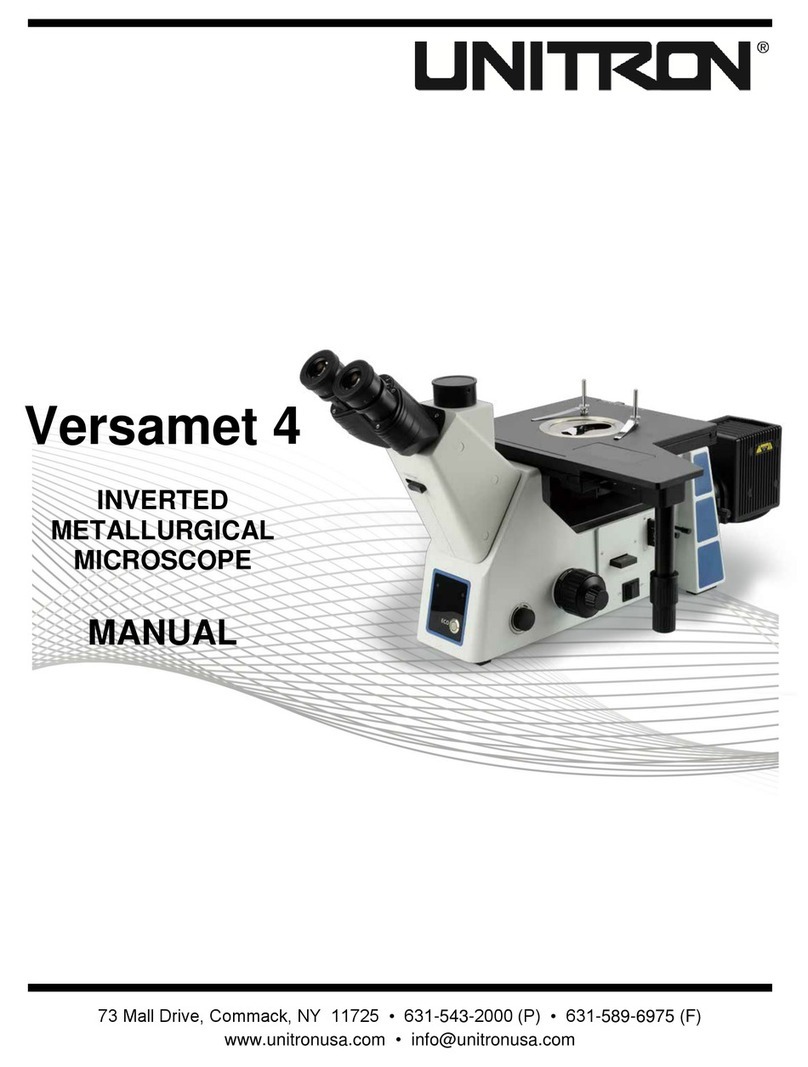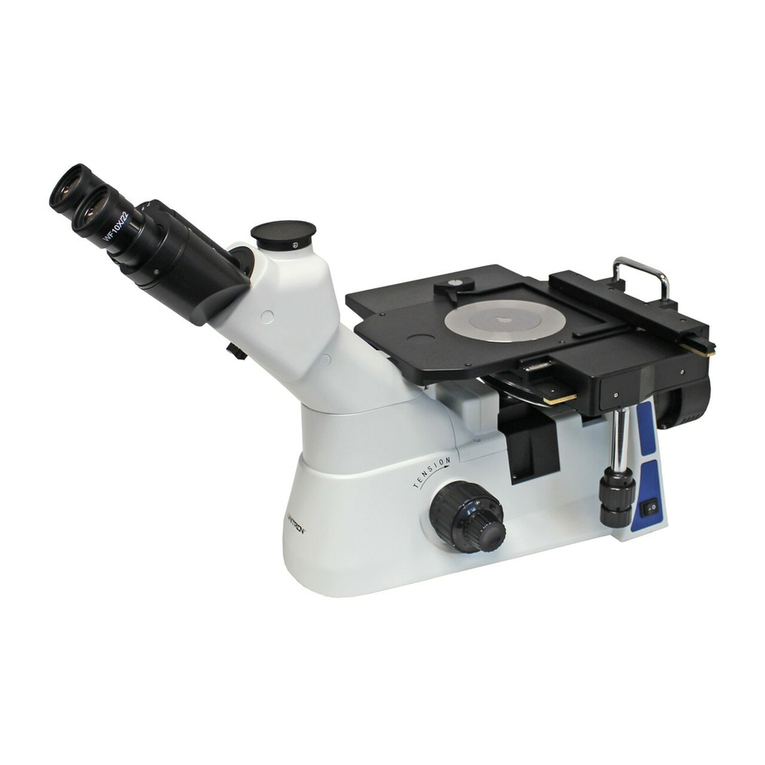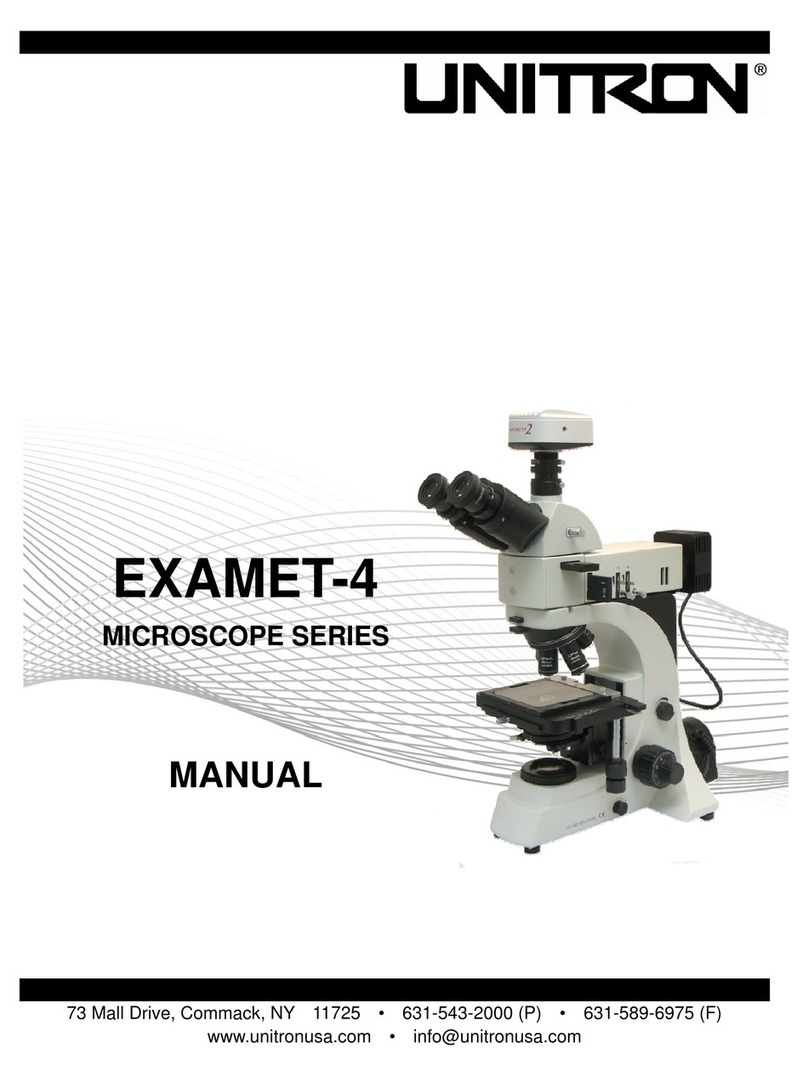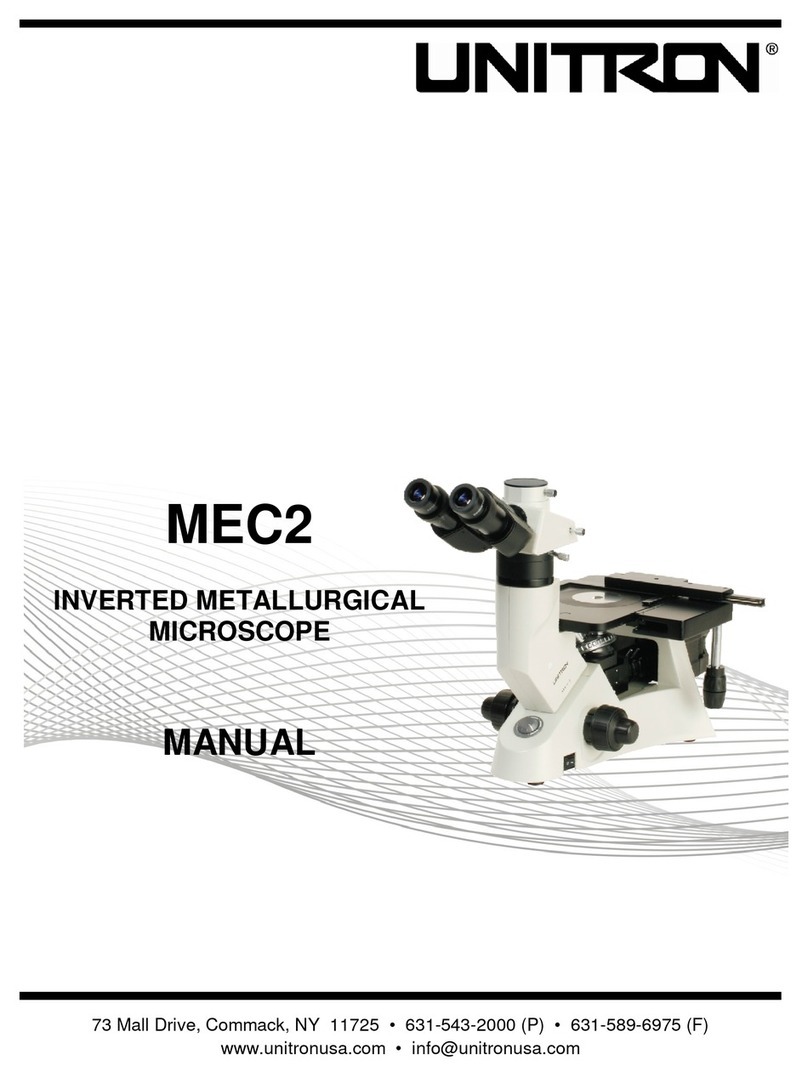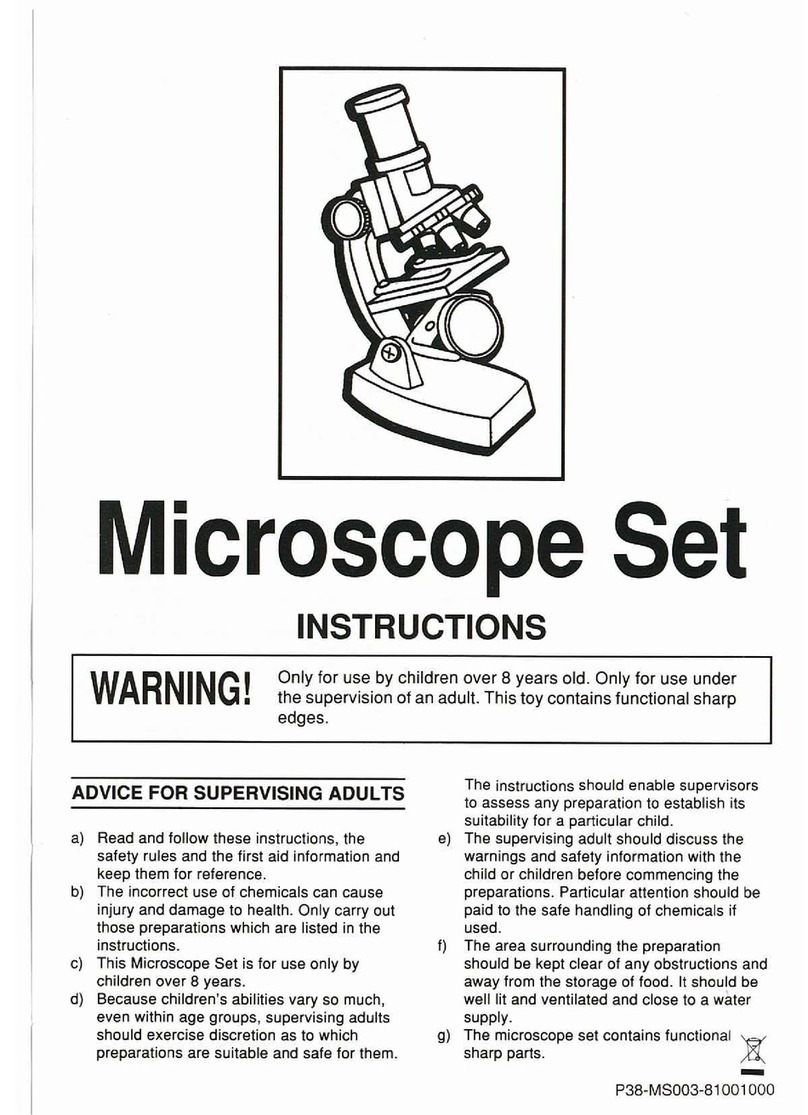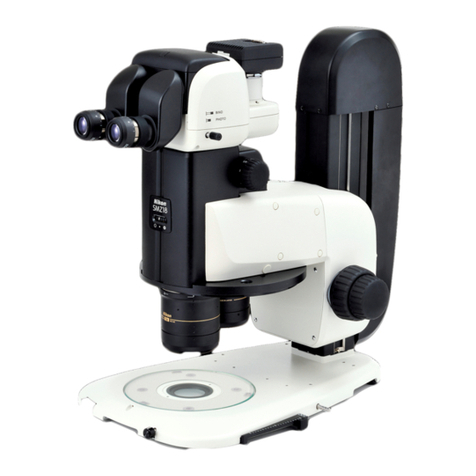
12100 POLARIZING MICROSCOPE SERIES
UNITRON® 3
SAFETY NOTES
1. Open the shipping carton carefully to prevent any accessory, i.e. objectives or eyepieces, from
dropping and being damaged.
2. Keep the instrument out of direct sunlight, high temperature or humidity, and dusty environments.
Ensure the microscope is located on a smooth, level and firm surface.
3. If any specimen solutions or other liquids splash onto the stage, objective or any other component,
disconnect the power cord immediately and wipe up the spillage. Otherwise, the instrument may be
damaged.
4. All electrical connectors (power cord) should be inserted into an electrical surge protector to prevent
damage due to voltage fluctuations.
5. LED LAMP & FUSE REPLACEMENT -- CAUTION: the glass housing of the lamp may
be hot. DO NOT attempt to change the lamp before it is completely cooled For safety
when replacing the LED bulb or fuse (ONLY replace with the same size, type and rating of
original LED bulb or fuse), be sure the main switch is in the off position, disconnect the
power cord from outlet, and replace the LED bulb or fuse. Reconnect the power cord and
turn unit on.
6. Confirm that the input voltage indicated on your microscope corresponds to your line voltage. The
use of a different input voltage other than indicated will cause severe damage to the microscope.
NOTE: Always plug the microscope power cord into a suitable grounded electrical outlet.
A grounded 3-wire cord is provided.
CARE AND MAINTENANCE
1. Do not attempt to disassemble any component including eyepieces, objectives or the focusing
assembly.
2. Keep the instrument clean; remove dirt and debris regularly. Accumulated dirt on metal surfaces
should be cleaned with a damp cloth. More persistent dirt should be removed using a mild soap
solution. Do not use organic solvents for cleaning.
3. The outer surface of the optics should be inspected and cleaned periodically using an air bulb. If dirt
remains on the optical surface, use a soft, lint free cloth or cotton swab dampened with a lens
cleaning solution (available at camera stores). All optical lenses should be swabbed using a circular
motion. A small amount of absorbent cotton wound on the end of a tapered stick such as cotton
swabs or Q-tips, makes a useful tool for cleaning recessed optical surfaces. Avoid using an
excessive amount of solvents as this may cause problems with optical coatings or cemented optics
or the flowing solvent may pick up grease making cleaning more difficult. Oil immersion objectives
should be cleaned immediately after use by removing the oil with lens tissue or a clean, soft cloth.
4. Store the instrument in a cool, dry environment. Cover the microscope with the dust cover when not
in use.
5. UNITRON®microscopes are precision instruments which require periodic servicing to maintain
proper performance and to compensate for normal wear. A regular schedule of preventative
maintenance by qualified service personnel is highly recommended. Your authorized UNITRON®
distributor can arrange for this service.

